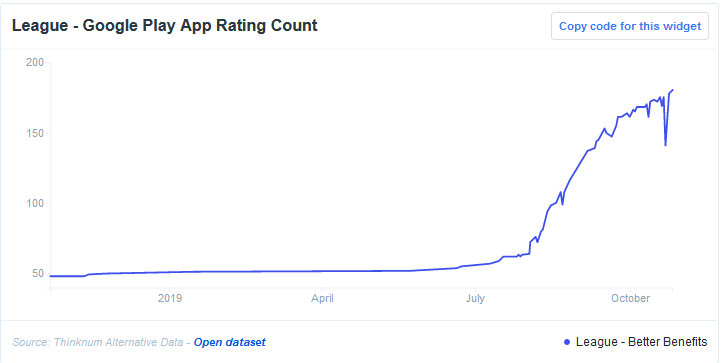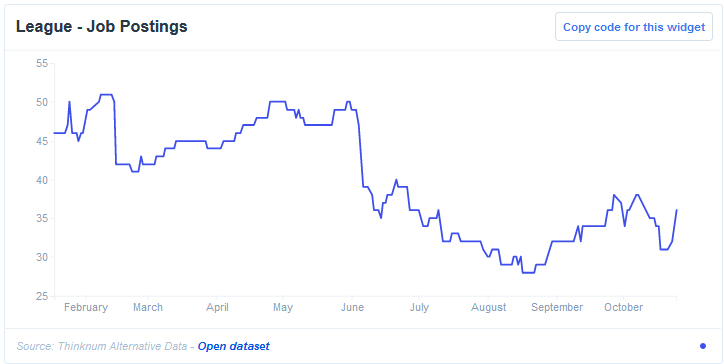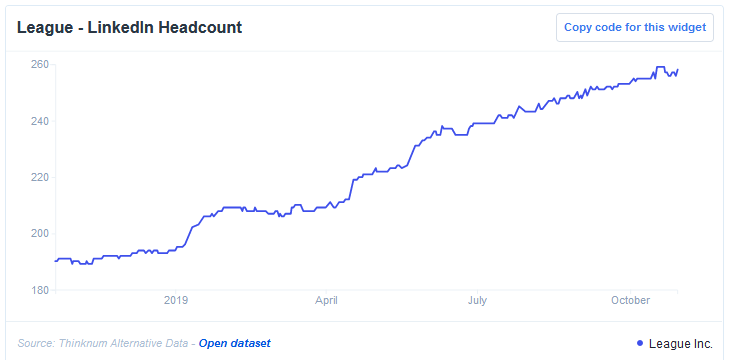
Toronto-based healthcare startup League wants to better connect people to insurance providers, and with its regulator-approved platform, thinks it can streamline expenses for payers in the process.
Already, it may be working. Our first chart tracks League's Google (NASDAQ:GOOGL) Play App Rating Count, which has been on a big trajectory since the year began (League also has a rating higher than 4-out-of-5 Stars in the Google Play store). League ($LEAGUE), n 2014 by Michael Serbinis and Todd Humphrey, has clearly been scaling its business out in 2019. In 2017, it expanded into the US, bringing on a US-based president, and launching operations in Chicago.

League raised $76 million, according to Crunchbase, in funding from backers including RBC Ventures, Canadian pension Omers and BDC Ventures. Among a clearly growing list of clients, according to a 2018 Techcrunch post tracking its nearly-$50M-Series-B, are Uber (NYSE:UBER) and Unilever (NYSE:UN), as well as companies that begin with other letters.

The startup has been posting fewer, and not more, job postings as of late. At the beginning of 2019, League was posting more than 40 jobs, which has slid slightly over the course of the year. But, it's no big deal. As our next chart shows - it's not because League is running out of work to do, either.
League looks like a company that might run out of desks and space before it runs out of things to do. The startup's headcount has risen more than 50% since 2019 began - and it's likely that the job postings that were removed from the corporate site, were simply being filled up with talented staffers.
As the healthcare industry continues to be a laggard for digital applications and quality of service, League - and others like it - are poised to come front-and-center before consumers who are disappointed with their employer, their healthcare plan, their doctor - or all three.
About the Data:
Thinknum tracks companies using the information they post online - jobs, social and web traffic, product sales and app ratings - and creates data sets that measure factors like hiring, revenue and foot traffic. Data sets may not be fully comprehensive (they only account for what is available on the web), but they can be used to gauge performance factors like staffing and sales.
